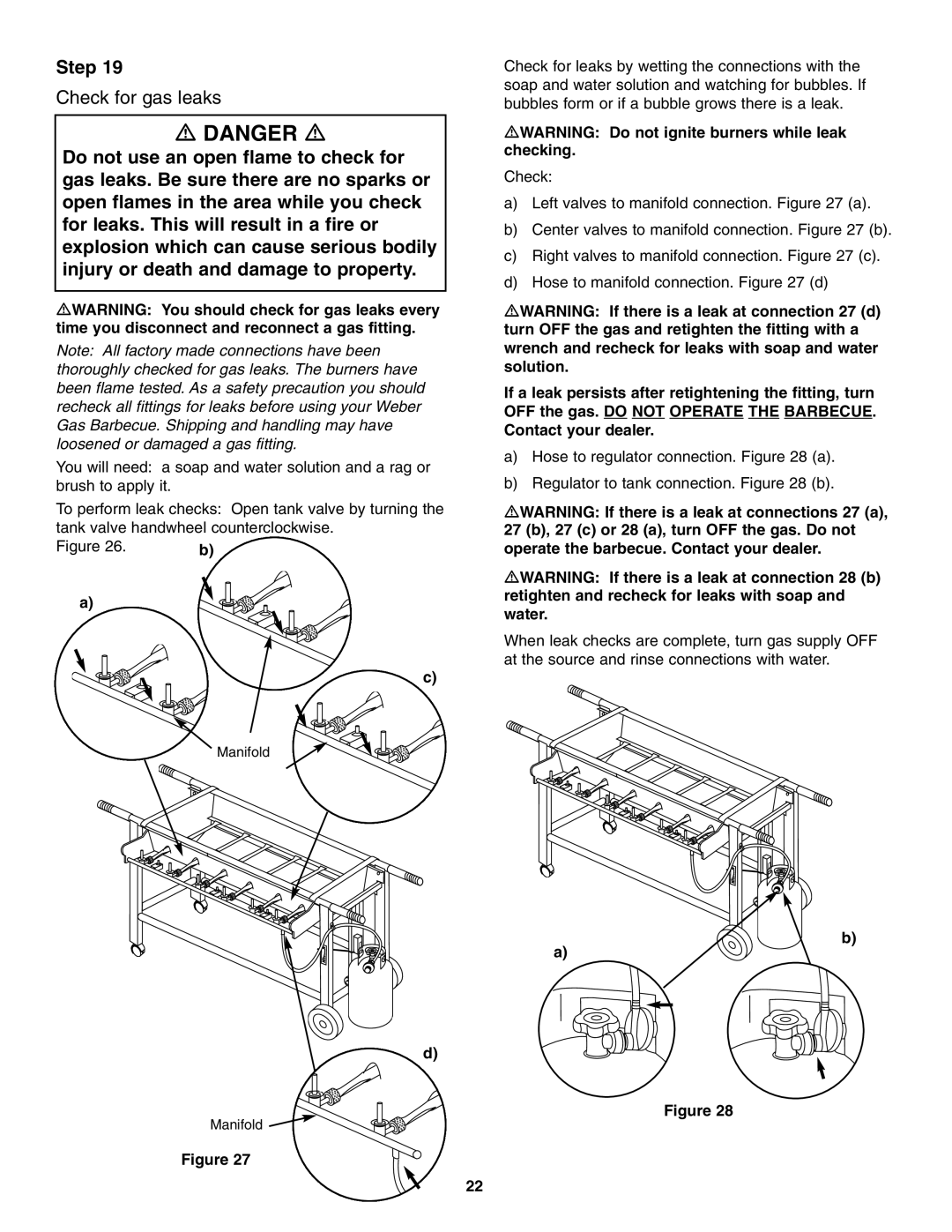FT 600 specifications
The Weber FT 600 is an innovative and cutting-edge grilling machine designed for both amateur and professional grill enthusiasts. It combines high-performance features with advanced technologies, making it a preferred choice for those who pursue the ultimate grilling experience.One of the standout features of the Weber FT 600 is its superior heating system. Equipped with a powerful gas burner, this grill reaches high temperatures quickly, promoting efficient cooking. The infrared technology ensures even heat distribution across the grilling surface, allowing for perfectly cooked meats, vegetables, and other grilling delights.
The grill's cooking surface is expansive, providing ample room for grilling multiple items simultaneously. It boasts a durable, easy-to-clean surface made of high-quality stainless steel, which not only enhances heat retention but also adds a sophisticated aesthetic to any outdoor kitchen setup.
Another key technology featured in the Weber FT 600 is the integrated temperature control system. This system allows users to monitor and adjust the temperature with precision, ensuring that different types of food cook optimally. The built-in thermometer provides real-time readings, taking the guesswork out of grilling.
The Weber FT 600 also emphasizes user convenience. It includes features such as a large, detachable grease tray that simplifies cleanup and a side burner for preparing sauces or side dishes while grilling. The grill's sturdy construction and weather-resistant materials ensure longevity, allowing users to enjoy countless barbecues season after season.
For enhanced versatility, Weber has integrated a range of accessories into the FT 600. From rotisserie kits to grill tools, these accessories are designed to elevate the grilling experience further. The grill can be customized to accommodate diverse cooking styles, whether smoking, roasting, or searing.
Finally, safety is a top priority in the design of the Weber FT 600. With features such as a secure lid latch and even-temperature distribution, users can cook with peace of mind.
In conclusion, the Weber FT 600 embodies the perfect blend of technology, performance, and convenience. Its robust features and user-centric design make it an exceptional choice for anyone looking to elevate their outdoor cooking experience. With this grill, delicious and evenly cooked meals are always just a flame away.

